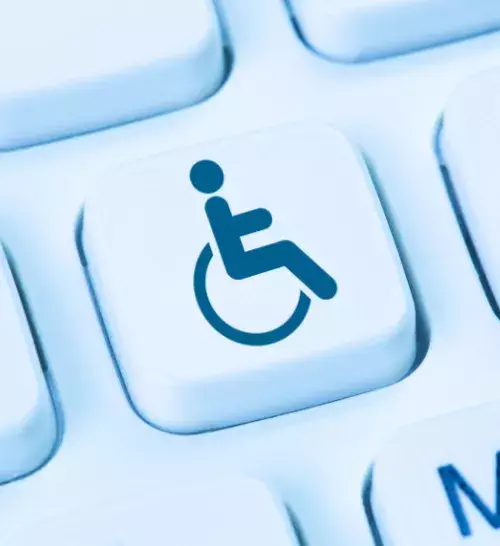In an increasingly connected world, website accessibility has become imperative for businesses aiming to offer an inclusive and equitable online experience to all users. Whether it's for individuals with physical, cognitive, visual, or auditory disabilities, or simply for those encountering temporary access difficulties, designing an accessible website is essential to ensure that everyone can navigate and interact with your online content easily.
In this article, we'll explore the key steps to make your website accessible to all, highlighting the significance of this approach for businesses concerned with providing an inclusive digital experience.
Step 1: Understanding the Needs of Your Users (All Disabilities)
Do: Conduct research on the specific needs of disabled users, such as those with visual, auditory, motor, cognitive, or neurological impairments.
Avoid: Assuming that all users have the same needs.
Step 2: Simplify Design and Use Accessible Colors (Visual Impairments)
Do: Use contrasting colors for text and background to facilitate reading for individuals with reduced vision.
Avoid: Using color combinations that make reading difficult for people with vision impairments.
Step 3: Write in Clear Language and Use Simple Sentences (Cognitive or Linguistic Impairments)
Do: Use simple language and short, direct sentences to facilitate understanding for individuals with cognitive or linguistic difficulties.
Avoid: Using technical jargon or complex sentences that could be difficult for some users to understand.
Step 4: Structure Content with Bulleted Lists and Descriptive Buttons (Screen Reader Users)
Do: Use bulleted lists to organize content clearly, thus facilitating navigation for screen reader users.
Avoid: Using generic buttons like "Click Here" that do not provide clear indication of the action to be taken for screen reader users.
Step 5: Design Consistent and Easy-to-Navigate Layouts (Memory or Attention Disorders)
Do: Maintain a consistent layout across all pages of the site to facilitate navigation for individuals with memory or attention disorders.
Avoid: Excessively changing the layout from one page to another, which could disorient users.
Step 6: Avoid Common Pitfalls: Dazzling Contrasts and Idiomatic Expressions (All Disabilities)
Do: Use adequate contrasts between text and background to avoid reading difficulties for individuals with vision impairments.
Avoid: Using idiomatic expressions that may not be understood by all users, especially those with cognitive or linguistic impairments.
Step 7: Regularly Test and Validate the Accessibility of Your Website (All Disabilities)
Do: Regularly conduct accessibility tests with disabled users to promptly identify and address accessibility issues.
Avoid: Assuming that your site is accessible without conducting thorough tests with disabled users.
Step 8: Integrate Textual Alternatives for Media (Screen Reader Users or Those with Visual Impairments)
Do: Provide text descriptions for images and transcripts for videos to make multimedia content accessible to screen reader users or those with visual impairments.
Avoid: Using only media that is inaccessible to screen reader users or those with visual impairments.
Step 9: Adapt the Site for Easy Use with Assistive Technologies (Motor or Visual Impairments)
Do: Design your site to be compatible with assistive technologies such as screen readers to enable users with motor or visual impairments to easily access your site.
Avoid: Using features that are not accessible via keyboard or assistive technologies, which could render the site unusable for some users.
Step 10: Raise Awareness and Educate for an Inclusive Web Culture (All Disabilities)
Do: Raise awareness among your team about best practices in web accessibility to ensure that all team members understand the importance of making the site accessible to all users.
Avoid: Ignoring the importance of web accessibility in your company's culture, which could result in shortcomings in website design and development.
Get Involved in Inclusion: Entrust Us with Your Digital Projects for an Accessible Website for All!
At Esokia, we are firmly committed to providing digital solutions that meet the needs of all our users. As a digital agency 360° , we take recommendations seriously to make our mobile applications and websites accessible to everyone. We strongly believe that web accessibility is not only a moral duty but also a competitive advantage for businesses.
Entrust us with your digital projects and benefit from this advantage by offering an inclusive online experience that reflects the values of openness and accessibility of your company. Together, let's make the web a space where every individual can fully participate and engage, regardless of their ability or needs.
- Log in to post comments
